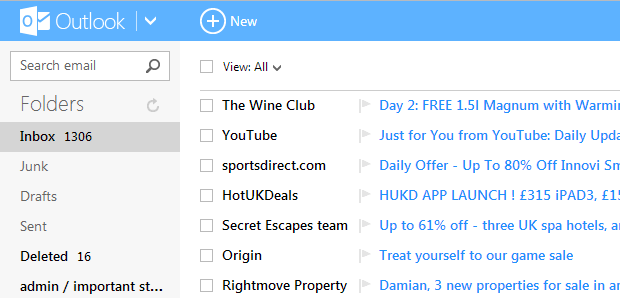
I remember in GCSE Business Studies being taught about how to write a memo. Though I never got the chance to write a real memo as by the time I had finished college and university the business world was using email. I wonder if pupils are taught how to write emails in school today. I hope so. If I were teaching them how to write a good email I’d ask them to think more about the recipient of the message, or the user if you will. Here are my five tips to make it easier for the recipient of your email to read, understand and action your message.
1. Include your phone number
Many people include the option to ‘phone me if you have any questions’ in their message. Yet, it is surprising how many emails don’t include a phone number. Make it easy, even if you’re not offering an option to call you back, leave your number and save the reader the hassle of trying to dig out your number from somewhere else when they want to call you.
2. Provide a response deadline
You need a response quick smart. The person you sent the email to scan reads the email and prioritises a few other things over it. The deadline comes and goes, you get frustrated. Explain that you need a response by a specific time in your email so your recipient can respond accordingly, or at least let you know that the deadline is too tight! Either way, the risk is mitigated.
3. Don’t Cc anyone
Over my years as a project manager, I often received emails just to keep me ‘in the loop’. But when everyone does this it becomes a chaotic mass of noise making it difficult and time consuming to know where to focus. How many emails in your inbox are actually for you? How many people do you Cc, just in case? When sending an email ask yourself, who really needs to receive this? If the recipient doesn’t warrant being in the ‘To’ field, why are they receiving this email? Remove them, save them time, and if you need to communicate with them email them directly.
4. Keep it short
Long emails are laborious to read, and often most of the information isn’t needed. Use emails to stick to the point. If a deeper level of discussion is needed, pick up the phone (see #5), or if you have a lot to say to lots of people, don’t write a long email and send it to everyone (see #3), write a few short emails and send it only to those that need it. If you have lots of discussion points and activity to go through, use collaboration tools like Basecamp, Evernote, and Pinterest.
5. Pick up the phone
When you have quite a bit to say, or the subject matter is quite difficult to word in an email, just pick up the phone. The amount of lost time mulling over the content of your email, combined with the time for the recipient has to decipher it is rarely worth it, especially when the thread can get quite long. Often the whole point can be resolved in a five minute phone call. So ask yourself, will this be easier to talk through? Will the back and forth emails take too long? If yes, don’t be afraid to pick up the phone!
This may not be what they teach in GSCE business studies, but if we all apply these tips we’ll all be much happier receivers of email, and our inboxes might be a little more manageable.
If you’d like to chat about how we can help you communicate better with your users, get in touch. We’d love to hear from you.

